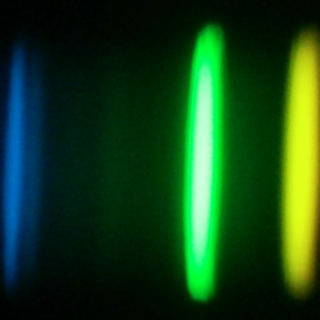Bibcode
Demangeon, O. D. S.; Zapatero Osorio, M. R.; Alibert, Y.; Barros, S. C. C.; Adibekyan, V.; Tabernero, H. M.; Antoniadis-Karnavas, A.; Camacho, J. D.; Suárez Mascareño, A.; Oshagh, M.; Micela, G.; Sousa, S. G.; Lovis, C.; Pepe, F. A.; Rebolo, R.; Cristiani, S.; Santos, N. C.; Allart, R.; Allende Prieto, C.; Bossini, D.; Bouchy, F.; Cabral, A.; Damasso, M.; Di Marcantonio, P.; D'Odorico, V.; Ehrenreich, D.; Faria, J.; Figueira, P.; Génova Santos, R.; Haldemann, J.; Hara, N.; González Hernández, J. I.; Lavie, B.; Lillo-Box, J.; Lo Curto, G.; Martins, C. J. A. P.; Mégevand, D.; Mehner, A.; Molaro, P.; Nunes, N. J.; Pallé, E.; Pasquini, L.; Poretti, E.; Sozzetti, A.; Udry, S.
Referencia bibliográfica
Astronomy and Astrophysics
Fecha de publicación:
9
2021
Revista
Número de citas
97
Número de citas referidas
87
Descripción
In recent years, the advent of a new generation of radial velocity instruments has allowed us to detect planets with increasingly lower mass and to break the one Earth-mass barrier. Here we report a new milestone in this context by announcing the detection of the lowest-mass planet measured so far using radial velocities: L 98-59 b, a rocky planet with half the mass of Venus. It is part of a system composed of three known transiting terrestrial planets (planets b-d). We announce the discovery of a fourth nontransiting planet with a minimum mass of 3.06−0.37+0.33 M⊕ and an orbital period of 12.796−0.019+0.020 days and report indications for the presence of a fifth nontransiting terrestrial planet. With a minimum mass of 2.46−0.82+0.66 M⊕ and an orbital period 23.15−0.17+0.60 days, this planet, if confirmed, would sit in the middle of the habitable zone of the L 98-59 system. L 98-59 is a bright M dwarf located 10.6ṗc away. Positioned at the border of the continuous viewing zone of the James Webb Space Telescope, this system is destined to become a corner stone for comparative exoplanetology of terrestrial planets. The three transiting planets have transmission spectrum metrics ranging from 49 to 255, which undoubtedly makes them prime targets for an atmospheric characterization with the James Webb Space Telescope, the Hubble Space Telescope, Ariel, or ground-based facilities such as NIRPS or ESPRESSO. With an equilibrium temperature ranging from 416 to 627 K, they offer a unique opportunity to study the diversity of warm terrestrial planets without the unknowns associated with different host stars. L 98-59 b and c have densities of 3.6−1.5+1.4 and 4.57−0.85+0.77 g cm−3, respectively, and have very similar bulk compositions with a small iron core that represents only 12 to 14% of the total mass, and a small amount of water. However, with a density of 2.95−0.51+0.79 g cm−3 and despite a similar core mass fraction, up to 30% of the mass of L 98-59 d might be water.
Full Table B.1 is only available at the CDS via anonymous ftp to cdsarc.u-strasbg.fr (ftp://130.79.128.5) or via http://cdsarc.u-strasbg.fr/viz-bin/cat/J/A+A/653/A41
Based in part on Guaranteed Time Observations collected at the European Southern Observatory under ESO programme(s) 1102.C-0744, 1102.C-0958, and 1104.C-0350 by the ESPRESSO Consortium.
Proyectos relacionados

Estrellas de Baja Masa, Enanas Marrones y Planetas
Se investigan los procesos que conducen a la formación de estrellas de baja masa, enanas marrones y exoplanetas y caracterizar las propiedades físicas de estos astros en varias etapas evolutivas. Las estrellas de muy baja masa y las enanas marrones son probablemente los objetos más numerosos de nuestra Galaxia, pero no por ello están
Rafael
Rebolo López

Exoplanetas y Astrobiología
La búsqueda de vida en el Universo se ha visto impulsada por los recientes descubrimientos de planetas alrededor de otras estrellas (los llamados exoplanetas), convirtiéndose en uno de los campos más activos dentro de la Astrofísica moderna. En los últimos años los descubrimientos cada vez más numerosos de nuevos exoplanetas y los últimos avances
Enric
Pallé Bago

Abundancias Químicas en Estrellas
La espectroscopía de estrellas nos permite determinar las propiedades y composiciones químicas de las mismas. A partir de esta información para estrellas de diferente edad en la Vía Láctea es posible reconstruir la evolución química de la Galaxia, así como el origen de los elementos más pesados que el boro, forjados principalmente en los interiores
Carlos
Allende Prieto